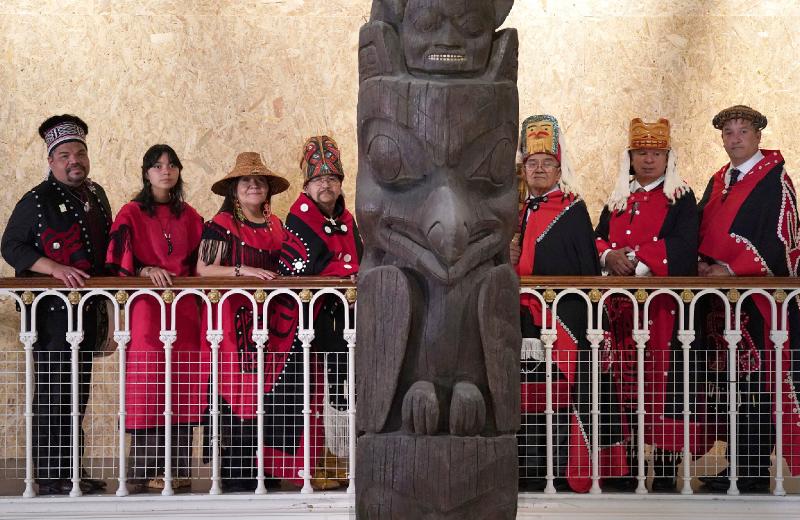Totem Pole Taken 94 Years Ago Begins 4,000-Mile Journey Home


Almost 100 years ago, a hand-carved totem pole was cut down in the Nass Valley in the northwest of Canada’s British Columbia.
The 36-foot tall pole had been carved from red cedar in the 1860s to honor Ts’wawit, a warrior from the Indigenous Nisga’a Nation, who was next in line to become chief before he was killed in conflict.
A Canadian anthropologist, Marius Barbeau , oversaw the removal of the memorial pole in the summer of 1929, while the Nisga’a people were away from their villages on an annual hunting, fishing and harvesting trip, according to the Nisga’a government.
Mr. Barbeau sent the pole to a buyer more than 4,000 miles away: the Royal Scottish Museum in Edinburgh — today known as the National Museum of Scotland.
A Nisga’a delegation in traditional red and black robes crossed the grand gallery of the museum on Monday, passing a Japanese Buddha, a Sudanese sculpture and a feast bowl from the Pacific, before finally reaching the totem pole, where they performed a spiritual ceremony to prepare it for its journey back to Canada.
The Nisga’a believe that the pole has a spirit embedded in it, and do not consider it an object but a living being, according to Amy Parent , whose Nisga’a name is Noxs Ts’aawit. Monday’s ceremony consisted of putting it to sleep before it started its journey home.
“We have a living family member that’s been imprisoned within a museum,” said Dr. Parent, an associate professor of education at Simon Fraser University. She added that the pole deeply connects them to their history.
Other museums in Britain have returned or pledged to return items from their collections, but Monday’s was among the first repatriations of items from British national institutions, according to a spokesman from the National Museum of Scotland.
Around the world, as awareness of imperialistic looting has grown, countries have begun returning artifacts. Germany pledged to return more than 1,000 bronzes to Nigeria last year, Italy sent Greece a fragment from the Parthenon that had been held at a museum in Sicily for over 200 years, and in 2021, President Emmanuel Macron returned 26 items from France to Benin .
But Britain has been less keen on the matter , with the British Museum resisting the return of the Elgin Marbles that once decorated the Parthenon in Athens. The artifacts are considered among the museum’s highlights, and museum leaders have argued that they were legally acquired. A law regulating the British Museum also states that it cannot give away items from its collection if they are not “unfit to be retained.”
But the National Museum of Scotland is governed by a different statute that allows the government to give permission to museums to return artifacts under certain conditions.
“This is a really historic move by Scotland ,” said Andrew Robinson, a representative of the Nisga’a government who attended the ceremony. “To provide some real form of reconciliation.”
“It was a really unethical time to acquire Indigenous belongings ,” said Dr. Parent, a member of the family to which the pole belongs, referring to years in which First Nations were the victims of what many called a genocide.
The Scottish government will partly finance the totem’s transportation, said John Giblin, the museum’s keeper of global arts, cultures and design. It will be placed at the Nisga’a museum in Nass Valley and welcomed with an arrival ceremony next month.
The delegation used the word “rematriation” instead of “repatriation” to reflect the matrilineal structure of the Nisga’a Nation.
Mr. Robinson said he appreciated the commitment of the National Museum of Scotland and that he hoped that other museums around the world that still hold Indigenous belongings would follow suit.
“All of those items actually belong to people,” he said. “And they were wrongfully removed from our nations .”








The full Totem ...
It is great to see the Totem being returned to it's rightful place. Good on Scotland.
This encompassed all of the Americas for hundreds or years.
from the article...
yeah, right...
My favorite line: "The delegation used the word “rematriation” instead of “repatriation” to reflect the matrilineal structure of the Nisga’a Nation."
The museum:
Note to self: put some oolichan grease in the bucket list.